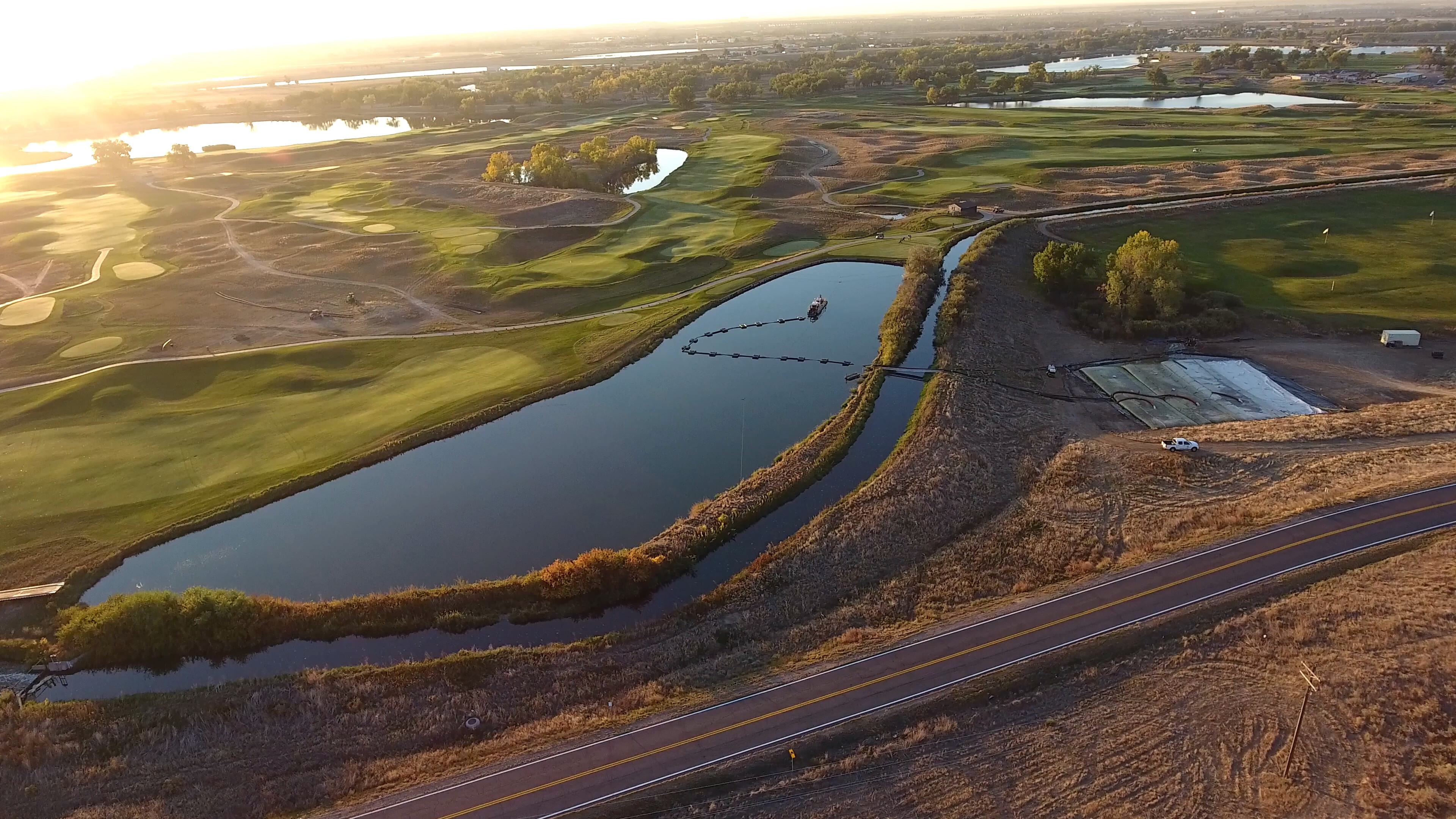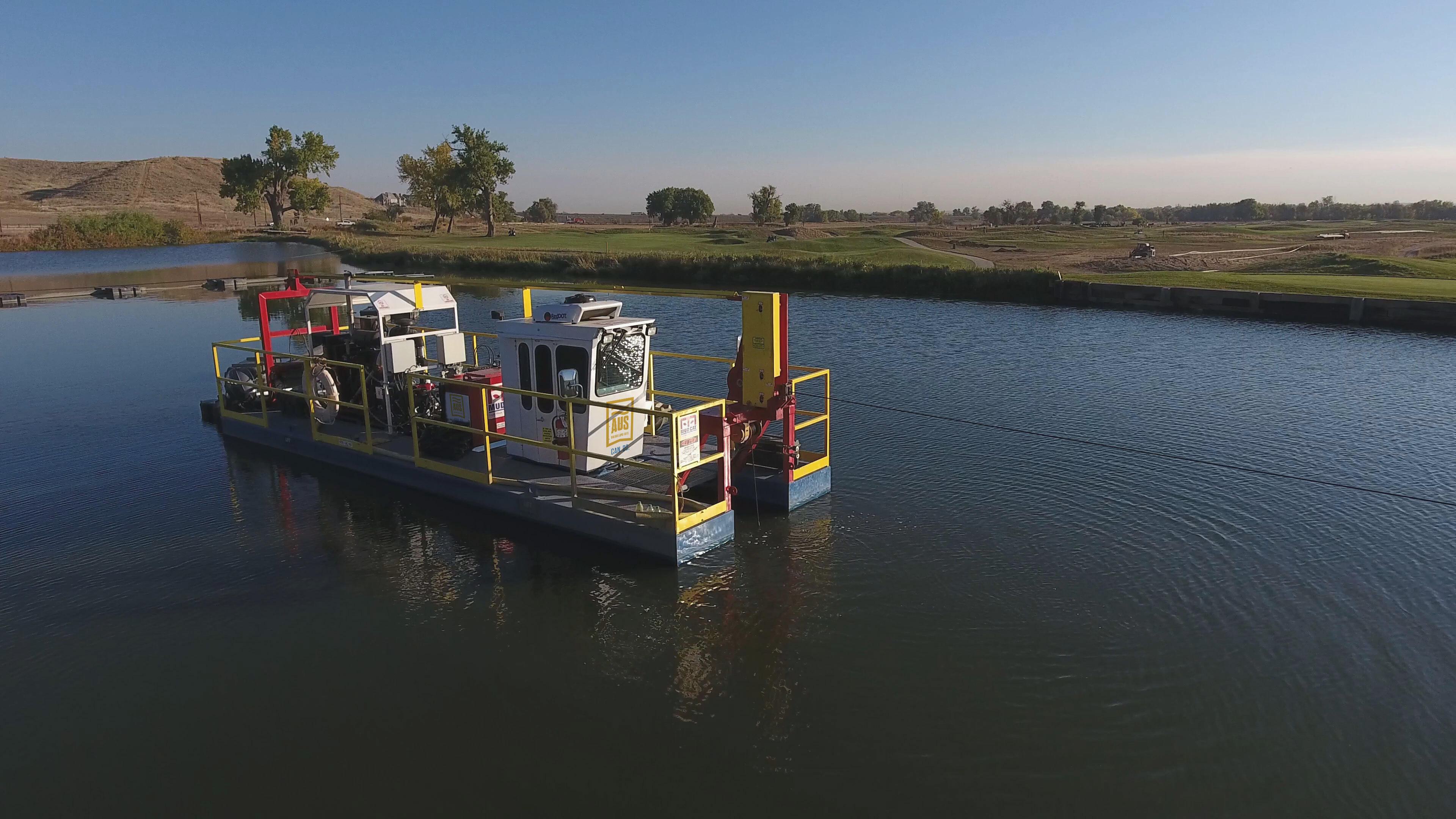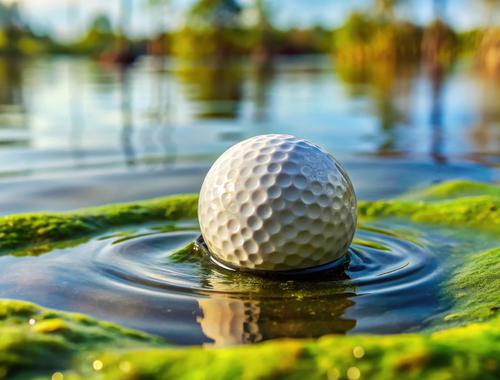Golf Course Dredging: 10 Things You Should Know Before You Start
Your golf course pond(s) is a critical component of your irrigation system, member experience, and course aesthetics. When sediment buildup starts choking your pumps, creating unsightly algae blooms, or turning your signature water feature into a muddy embarrassment, golf course dredging becomes essential. Every day you delay this crucial maintenance costs you more money and member satisfaction.
Here's the problem: most golf course managers approach dredging as crisis management rather than strategic planning. The result? Blown budgets, extended downtime, and half-measures that don't solve the root issues. Courses spend tens of thousands on emergency fixes when proper planning could have prevented the crisis entirely.
Don't let your water features become your biggest headache. With over two decades of golf course dredging experience, we've identified the ten critical factors that separate successful projects from costly disasters. Here's what you need to know before the first piece of equipment touches your property:
1. Define the Purpose Clearly
Your dredging project isn't just about "cleaning up the water", it's about solving specific problems that affect your course operations and member experience. Without a clearly defined purpose, you'll face cost overruns, inadequate solutions, and frustrated maintenance teams.
Are you dredging to restore water depth for irrigation pumps? Eliminate algae blooms that create unsightly conditions? Prevent flooding during heavy rains? Each goal requires different approaches, equipment, and timelines. Define your primary objective first, then identify secondary benefits.
Here's what happens when purposes aren't clear: contractors propose generic solutions, project scope creeps beyond budget, and you end up with half-measures that don't solve your core problem. Golf courses spend thousands on surface treatments when they actually need comprehensive sediment removal, and vice versa.
Take this step seriously: document your specific challenges, desired outcomes, and success metrics before any contractor steps foot on your property. Your future maintenance schedule, and budget, depends on getting this foundation right from day one.
2. Choose Staging Areas Strategically
Your staging area selection can make or break your entire dredging timeline, and your course's reputation. Poor placement means torn-up fairways, angry members, and equipment stuck in soft ground when you least expect it.
Here's what we've learned from decades of golf course projects: accessibility trumps convenience every time. Your staging area needs year-round equipment access, not just during dry months. Choose locations with solid ground conditions that can handle heavy machinery, even after unexpected rainfall.
Consider your sediment disposal route carefully. The shortest path between your pond and disposal site isn't always the smartest if it crosses three active fairways. The last thing you want is contractors trying to work around tee times instead of planning efficient equipment movement.
Pro tip: Walk the route with your superintendent during peak play hours. If cart traffic creates bottlenecks, heavy equipment will shut down play entirely. Strategic staging prevents costly delays and keeps members happy while you restore those water features.
3. Understand Sediment Composition
Not all pond muck is created equal, and treating it like it is will cost you time, money, and potentially your project timeline. Your golf course pond's sediment composition directly determines which dredging method will work best and which equipment you'll need on-site.
For example, organic matter from decomposed leaves and grass clippings, fine sand particles from erosion, clay deposits that create compaction issues, and sometimes unexpected debris like old irrigation components. Each type requires a different approach: organic-heavy sediment needs specialized pumping systems, while clay-dense material demands higher-powered equipment.
Before any dredging begins, we conduct sediment analysis to map exactly what you're dealing with. This isn't just technical due diligence, it's the difference between a smooth three-day project and a week-long nightmare with equipment failures. Don't guess at your sediment composition, test it first.
4. Choose the Right Dredging Method
The wrong dredging method choice leads to damaged pond liners, disturbed wildlife, and blown budgets.
Your pond's depth, sediment type, and accessibility determine the best approach. Hydraulic dredging works perfectly for deeper water features with soft sediment, it's less invasive and preserves your carefully designed pond edges. Mechanical dredging tackles compacted clay and debris in shallow areas where precision matters most.
Courses with liner systems need hydraulic methods to prevent punctures, while natural-bottom ponds can handle mechanical removal.
In especially sensitive zones such as areas near manicured shorelines, decorative rockwork, or fragile vegetation, AUS divers can perform hand dredging. This low-impact approach ensures sediment removal without harming surrounding features, offering maximum precision where equipment can’t safely reach.
Don't let equipment accessibility surprise you, verify your chosen method can actually reach your pond without destroying cart paths or pristine fairways. The right method prevents problems before they start.

5. Get Required Permits
Skipping the permit process isn't just risky, it's a project killer. Environmental and water management permits can be mandatory for golf course dredging, and the regulatory landscape varies significantly by location and the type of water body.
Here's what you might be facing: wetland permits, water discharge authorizations, and potentially endangered species clearances. Miss one, and your project stops cold, often with costly fines attached. The permit application process typically takes 60-90 days minimum, so plan accordingly.
Permitting requirements are location-specific. What’s necessary in one county or state might be completely different in another. That’s why we recommend working with certified environmental consultants or engineers familiar with your local regulations. If you don’t already have someone in mind, AUS can point you in the right direction. We work with trusted professionals who can conduct environmental assessments, manage agency communications, and help ensure your dredging project stays compliant from day one.
Don't navigate this maze alone. Partnering with the right experts can save time, money, and frustration.
6. Plan for Sediment Dewatering & Disposal
When your golf course dredging project wraps up, you're left with thousands of cubic yards of waterlogged sediment. Your dredged material needs proper dewatering before disposal or reuse. Without a solid plan, you'll face extended project timelines, unexpected hauling costs, and potential environmental compliance issues.
The key is determining your disposal strategy before the first scoop hits the water.
Sediment type plays a major role in dewatering success. Fine silts and clays retain water much longer than sandy material, meaning dewatering time, methods, and space requirements can vary drastically. That’s why your sediment analysis isn't just a technical formality; it directly impacts whether on-site dewatering is even feasible.
Consider these options: on-site dewatering with temporary containment areas, off-site disposal at approved facilities, or beneficial reuse for course landscaping projects. Each approach requires different permitting, space requirements, and cost structures. Don’t wait until your pond is half-empty to figure this out, plan your sediment management strategy during the design phase to prevent costly delays and ensure smooth project execution.
7. Minimize Disruption to Play and Turf
Golf course downtime equals lost revenue. Every day a hole is out of play impacts your bottom line. When planning your dredging project, timing is everything. The key is working during your course's natural maintenance windows or slower seasons to avoid peak play periods.
Strategic equipment selection makes the difference between minor inconvenience and major disruption. Smaller, specialized dredging equipment can access tight spaces without tearing up fairways or cart paths. Proper planning means protecting your turf investment. Using protective mats, designated access routes, and careful staging areas prevents costly re-sodding or reseeding.
Communication with your grounds crew ensures seamless coordination. Your maintenance team knows which areas can handle equipment traffic and when irrigation systems need protection. Don't let poor planning turn a water improvement project into a turf disaster. The right approach keeps players happy and your course beautiful while solving your water management challenges.
8. Account for Wildlife and Environmental Sensitivity
Environmental compliance protects both wildlife and your investment.
Your golf course pond is a thriving ecosystem that requires careful protection during dredging operations. Disrupting wildlife habitats or violating environmental regulations can halt your project and result in costly penalties.
At AUS, we are not wildlife specialists, but we deeply understand the importance of environmental sensitivity, and we’ve successfully completed numerous projects in ecologically sensitive areas. That’s why we always encourage our clients to work with certified environmental consultants or biologists who can assess local wildlife activity and ensure your project complies with all relevant regulations. If needed, we can help point you in the right direction to find qualified experts in your area.
Key considerations include nesting seasons, migration patterns, and protected species in your area. Timing is critical: avoid dredging during breeding seasons when possible.
With support from environmental consultants, you can secure proper permits and implement strategies like silt curtains, staged dredging, and sediment containment plans to protect downstream ecosystems.
With over two decades of experience in environmentally sensitive dredging projects, we've seen firsthand how proactive environmental stewardship leads to smoother operations, healthier ecosystems, and long-term project success.
9. Evaluate Long-Term Maintenance Solutions
Your golf course pond is an ongoing asset that demands strategic maintenance planning. Most course managers make the costly mistake of treating dredging as emergency damage control rather than preventive care.
The reality is that sediment accumulation never stops. Without a comprehensive maintenance strategy, you could face the same crisis every 3-5 years, each time more expensive than the last.
Smart course operators evaluate maintenance solutions that prevent problems before they arise. Regular sediment monitoring, strategic aeration systems, and scheduled maintenance windows during off-peak seasons. We work with courses to develop customized maintenance schedules that keep your water features pristine year-round while protecting your budget from emergency dredging costs.

10. Budget for More Than Just Dredging
Golf course managers are often blindsided when so-called "extras" add to the base dredging costs. But here’s the truth: these aren't extras, they're essential for a fully restored and playable course.
Ensure that you factor in costs such as shoreline restoration after equipment access, turf replacement in staging areas, irrigation system adjustments around newly shaped water features, cart path modifications, permit fees and environmental compliance and sediment disposal costs.Don't forget equipment mobilization, dewatering expenses, and revenue loss from hole closures.
At AUS, we provide detailed, upfront cost estimates that reflect the entire scope of work, not just the dredging itself. From mobilization to final cleanup, our quotes are designed to eliminate surprises and help you plan with confidence.
Beware of dredge companies that don’t offer comprehensive pricing. If it sounds too good to be true, it probably is. You shouldn’t have to scramble for budget halfway through your project or explain delays to members due to unanticipated costs.
Smart move: Always request a full project breakdown that includes all peripheral and restoration-related expenses before signing off. It’s the difference between a well-executed improvement and a drawn-out disruption.
Golf Course Pond Dredging: The Bottom Line
Golf course dredging isn't a project you can improvise. Every shortcut you take on upfront costs you exponentially more down the road. These ten considerations aren't suggestions, they're the difference between a smooth restoration that enhances your course and a disaster that drains your budget while frustrating members for months.
Your golf course's water features are critical assets that deserve professional-level planning. Take the time to address each of these areas thoroughly before breaking ground. Your future self, your patrons and your budget, will thank you when your ponds are functioning beautifully while neighboring courses are dealing with emergency repairs and cost overruns.
Smart planning prevents problems. Period.





